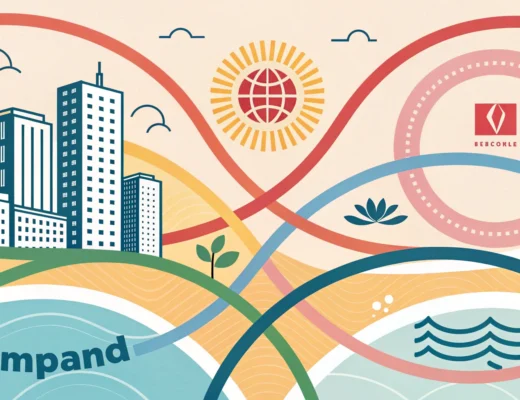You must have heard the term quite often, but do you know the blue-collar meaning? What does the term entail, and why is it so commonly used in the professional world.
It’s time to learn not only the blue-collar meaning but everything it stands for. Of course, everyone knows that blue-collar is a type of employment, but there’s a lot more to it than that!
Blue-Collar Meaning and Concept: What You Must Know
To put it in simple words, blue-collar jobs are the ones that involve manual labor. More often than not, these jobs pay an hourly wage. Examples of blue-collar jobs can be found in various fields, including mining, maintenance, construction, and manufacturing. If you didn’t know the blue-collar meaning before, you might have been referring to people with such jobs as members of the working class.
But more than the meaning of blue-collar, it’s more interesting to know how the term originated. The term actually goes back to the 1920s. During this period, people involved in mining and construction wore dark-colored clothes, usually overalls or jeans. They had to do physical labor in extreme temperatures; hence, comfort mattered too. The dark-colored clothes hid dirt. Hence, most of these people would wear boiler suits and jeans in blue colors.
And this is how they started being referred to as blue-collar workers. Of course, the blue-collar meaning has evolved since then. Now, a lot of workers with blue-collar jobs are skilled, not to mention highly paid.
Elevator installers, nuclear technicians, and subway operators all fall in this category, making more than $70,000 annually. This is significantly higher than what college graduates are paid immediately post-graduation.
But for a long time, the blue-collar meaning was pretty limited. People who did blue-collar jobs did not require much education or expertise.
But despite so much changing, remember blue-collar jobs are still the ones involving building and maintenance of something. It’s primarily due to the advancements in technology that blue-collar meaning has changed over the years. But the core of it remains the same.
Blue-Collar Job Examples and Requirements
More than blue-collar meaning, you should learn more about the requirements that such jobs demand. As we have said, things have changed drastically. Now, you cannot expect to land blue-collar jobs easily. Neither are they easy to keep. The good thing is, blue-collar jobs aren’t low-paying either.
Even now, the compensation of most blue-collar jobs is via hourly wage. Hence, if one puts in overtime, a blue-collar worker has the opportunity to earn significantly more. You will also find some blue-collar jobs that pay by the project. To sum up, belonging to the blue-collar job category no longer means a poor salary.
Examples of blue-collar jobs that pay pretty well include:
- Detectives and investigators
- Police and front-line supervisors
- Nuclear power reactor operators
- Power dispatchers and distributors
- Elevator installers and repairers
- Electronic repairers
- Railroad police
- First-line supervisors of firefighting workers
The number of people with blue-collar jobs will undoubtedly surprise you. In 2018, in the U.S. alone, the number of construction laborers reached up to 1,405,000, while those involved in maintenance and repair were nearly 1,488,000. Around 13.9% of workers in the U.S. were in blue-collar professions during the year.
It’s pretty evident that blue-collar jobs have increased significantly in the past few years. New opportunities have come up, and with that, people wanting to land blue-collar jobs have had to acquire new skills too. This is primarily why the blue-collar meaning is no longer clear in the minds of people.
The Difference Between Other Collar Jobs
Other than blue-collar, the most common form of employment you must have heard about is white-collar. Whenever you think of the blue-collar meaning and its comparison to white-collar, some pretty distinguished images must come to your mind.
Most people believe blue-collar workers must be earning significantly less than white-collar ones. But as we have proved, this isn’t always true.
People expect white-collar workers to work behind a desk while blue-collar workers have to actually do manual work in their job. It’s vital to understand what sets these two forms of employment apart.
Yes, we can’t deny that white-collar workers usually have a more well-rounded education. Additionally, white-collar workers typically belong to a different social class. Their skills and profession set them apart.
Apart from blue and white-collar, many other colored color categories exist that not a lot of people know about. These include the likes of green, gold, gray, and pink collars. Interestingly, these terms cannot be attributed to the workers wearing a particular color of shirts during their jobs, unlike blue and white-collar.
Green collar workers are part of the conservation and sustainability sectors. Gold collar professionals have specialized in the field of law and medicine. Gray collar refers to engineers. Pink collar jobs are the ones in service fields like salespeople, receptionists, and waiters.
The Ever-Changing Blue-Collar Meaning
The advancements in technology ensure a better quality of life for people with blue-collar jobs. But it has also made things a bit problematic. Now, you need some kind of training to land a blue-collar job. So if you had been looking for blue-collar meaning in hopes of finding a job opportunity for limited skills, you might face a bit of a challenge.
Adapting to Automation
The rise of automation has reshaped the blue-collar workforce in unexpected ways. Many traditional roles now require workers to operate advanced machinery or collaborate with technology. This shift has increased the demand for technical training and certifications.
For example, factory workers now manage robotic systems, and construction teams use drones for precision tasks. These advancements create new opportunities but also challenge those with outdated skills. As industries evolve, blue-collar workers must stay adaptable to secure their positions and thrive in this changing landscape.










